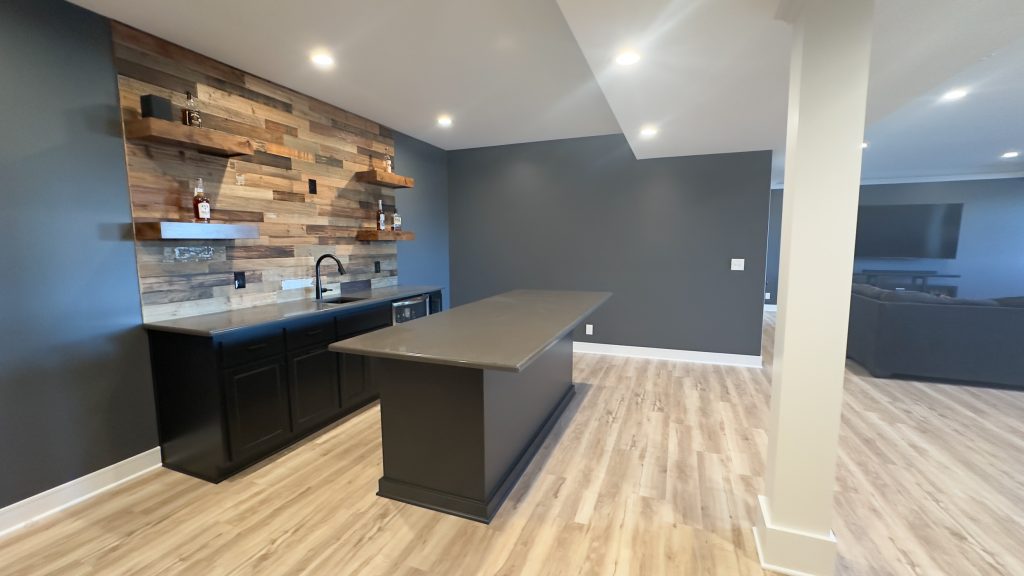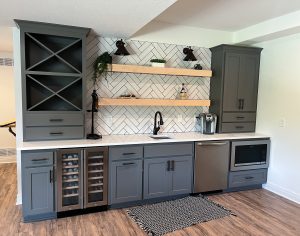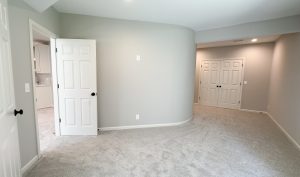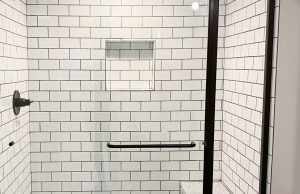When it comes to remodeling, we tend to think of paint as a fairly standardized finishing touch. We plan the wet bar, the floors, and amenities like linear fireplaces. When we’re finally ready to talk about paint, it’s usually about the color, not about the finish.
But the finish is important. The overall look of the paint is just the beginning. The finish also helps determine the durability, cost, and retouching strategy down the line. Is the room open and bright with a ton of windows? A flat or matte finish might be a good choice to minimize reflection.
Looks are important, of course, but cost is usually king. In general, the glossier the finish, the more expensive. However, factors like size of the room, trim, molding, and shape of corners all help determine the final cost.
Let’s talk about what you can expect from each finish, and what they’re used for.
High gloss
Exactly what it sounds like. This paint finish is glossy and slick. This is used almost exclusively for trim and isn’t found in every paint store. It’s durable, which is good for trim. It’s popular for children’s rooms and high traffic basements because it can stand up to handprints and cleaning, including daily scrubbings. Touch-ups are easy to blend, but prep work is key. If you don’t do this step correctly, mistakes can become visible down the line.
This is also the most expensive option. In addition to costing more per gallon, it often requires multiple coats. If you’re paying someone to do the job, this can mean high labor costs.
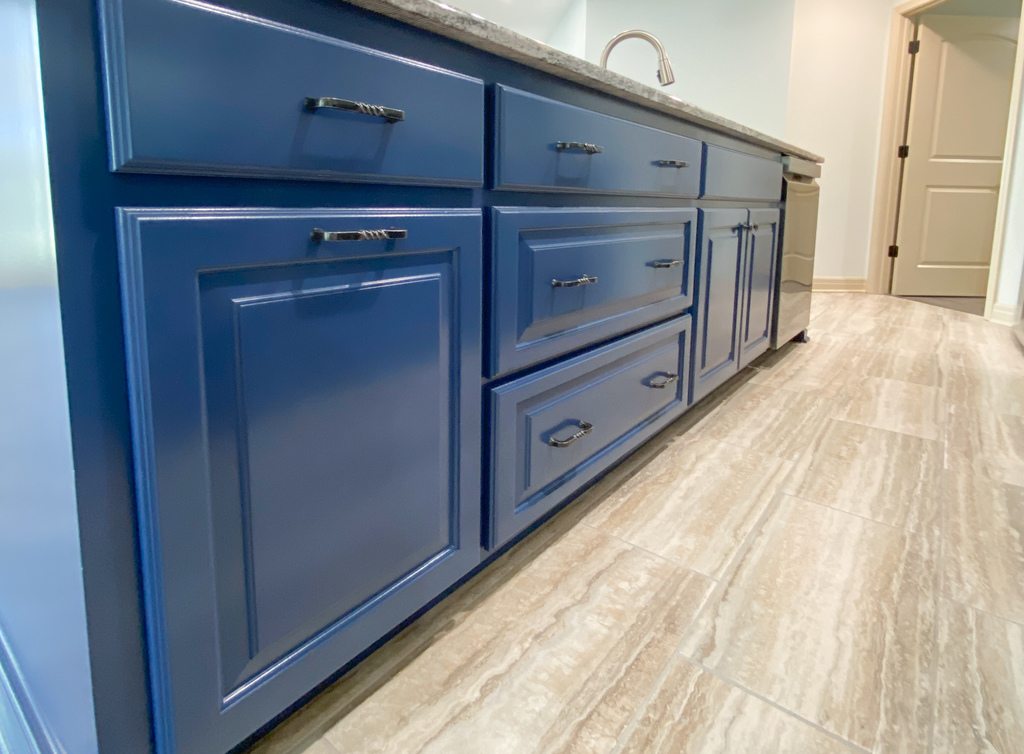
Semi-gloss paint is sometimes used on cabinets.
Semi-gloss
This is a safe and versatile option. The semi gloss paint finish isn’t as reflective as high gloss, but it’s still bright and pleasing. Like high gloss, its usefulness is limited. Most of the time, it’s used on trim, doors, and cabinets. Those areas can take a lot of wear and tear, so its durability is useful. Plus, it’s resistant to mildew. Because of this, it’s a popular option for kitchens and other rooms prone to moisture or humidity.
Satin
This paint finish is for cabinets and occasionally trim, but not walls. Satin is a popular finish for most rooms because of its visual appeal and durability. The soft, velvety appearance can fit with both fun and formal atmospheres. Although not the easiest paint finish to clean, it’s much easier to clean than flat paint finishes. In other words, it’s a great medium between high and low gloss. The only trick with this one is the quality of brush strokes. These can be visible if not done by an experienced painter.
Egg Shell
Egg shell looks great but comes at a cost. Painters always charge extra for this. However, the results are worth the extra cost. It’s easy to clean, and touch ups aren’t much of a problem. For these reasons, it’s popular with families. The soft luster is nice enough for a formal dining room, but the finish is durable enough for a kids room.
Flat
This is your standard wall paint finish, by far the most common for walls and ceiling. It’s inexpensive and looks great in any room. When you picture wall paint, this is probably what you’re thinking of. The low cost comes in part because of the high concentration of pigment.
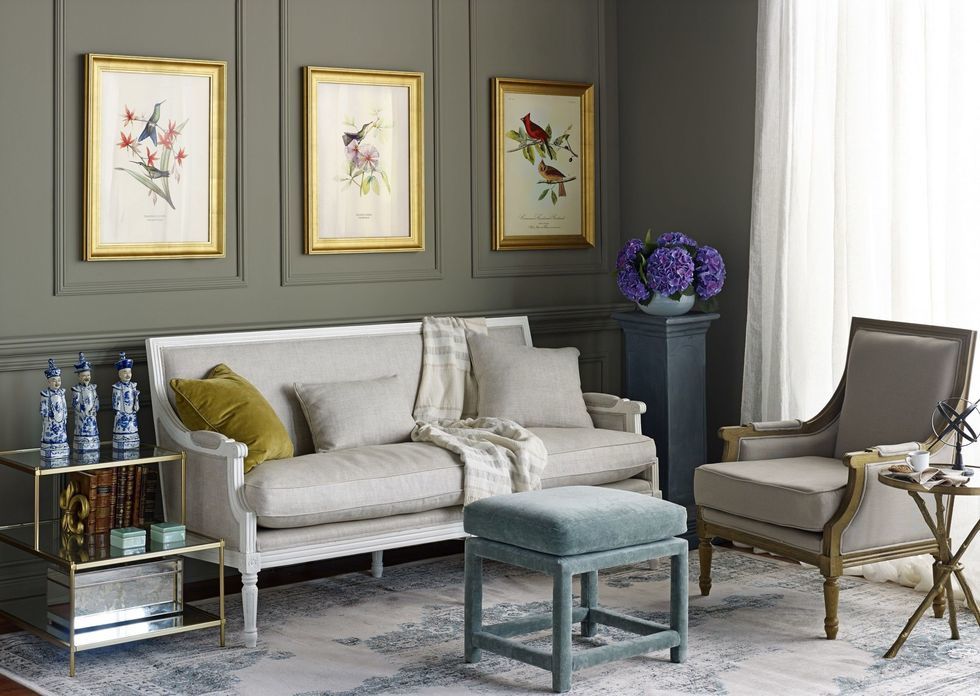
Because of it’s high-end look and higher cost, matte paint is often used in formal sitting rooms.
Matte
This is the high-end paint finish of the moment. A room with a matte paint finish feels trendy and luxurious. Because smudges and and marks are more visible, this finish is recommended for formal sitting rooms, home offices, and other rooms that get a low amount of traffic. It doesn’t reflect light, so it can make a room that doesn’t get much natural light feel darker.

